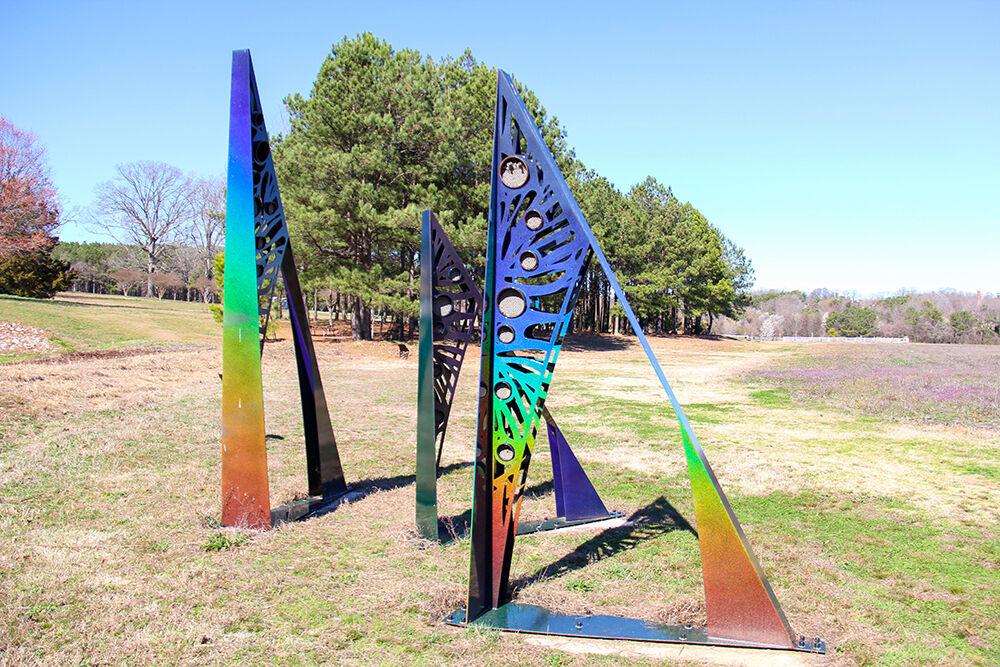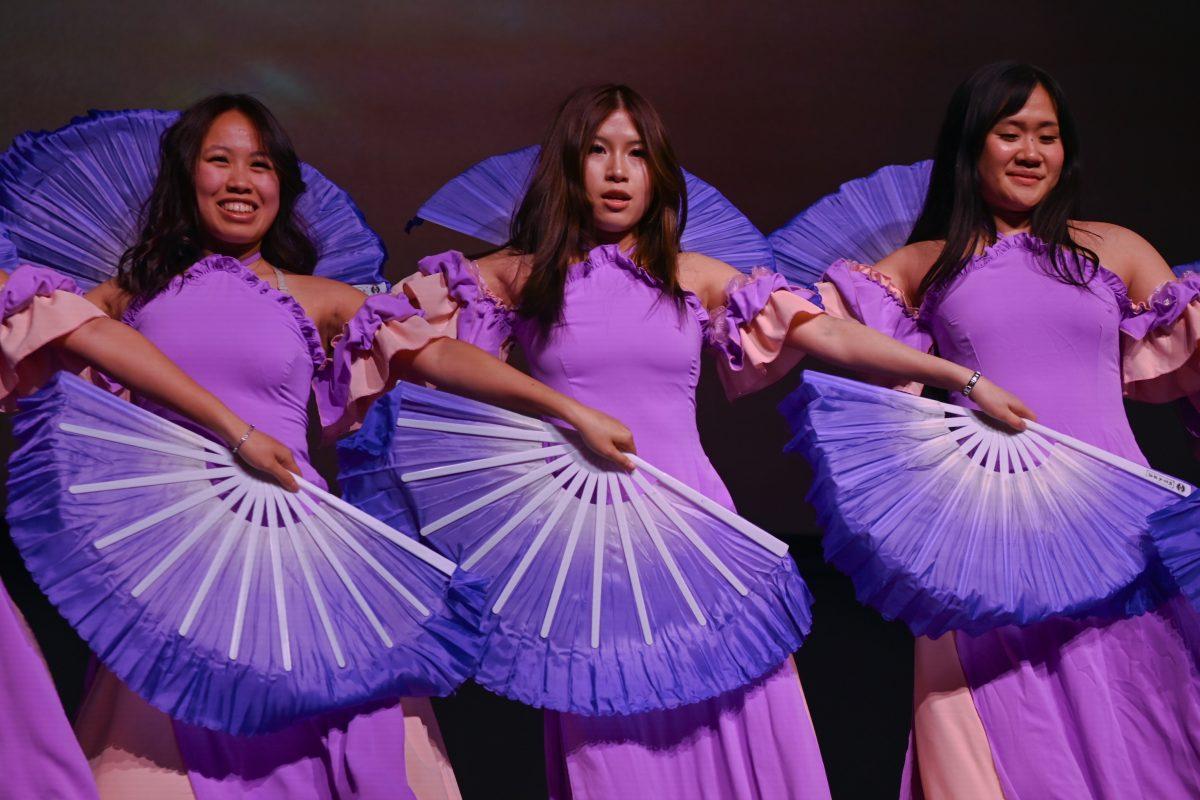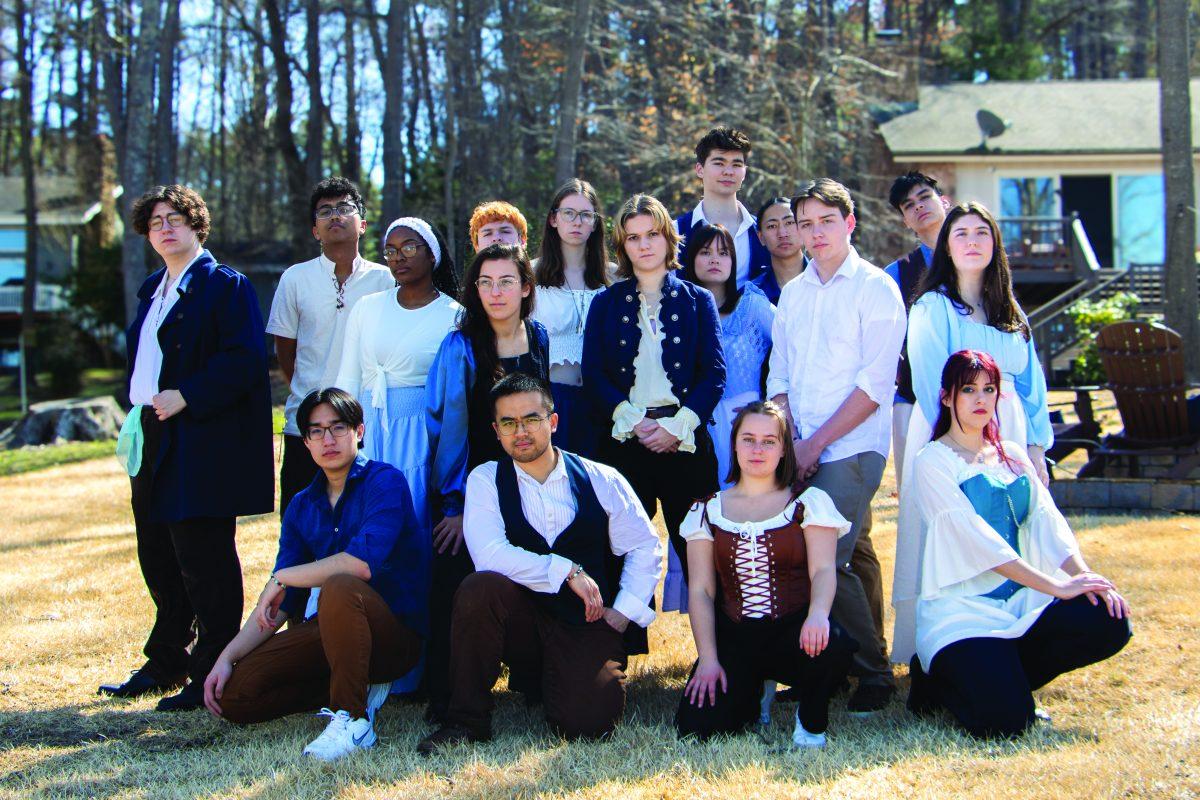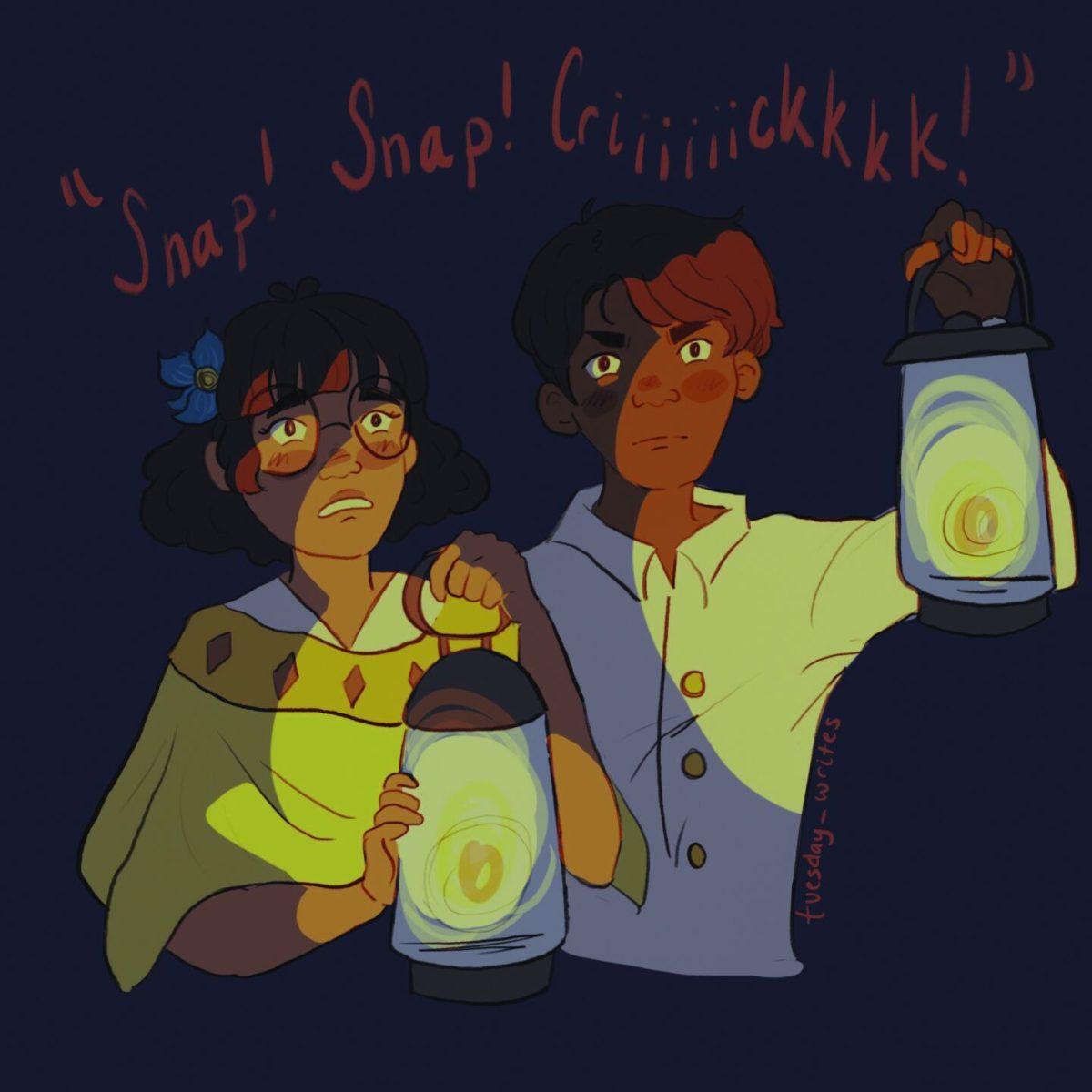Visitors to the famed sunflower fields at Dorothea Dix Park in the last year will have become acquainted with a new addition to the space. Adjacent to the fields is a peculiar art installation; on a humid summer day, visitors might mistake the sharp structure for a bee’s wings rising out of the vibrant yellow meadow.
This modern sculpture, which fuses industrial steel with nature, is the park’s “Public Art for Pollinators and People” project and serves two main purposes: to provide a home for pollinators and educate the public about them.
The sunflower fields and park as a whole provide a vast ecosystem for pollinators like bees, alongside other insects and animals. The sculpture provides spaces for 2,000 native pollinators like mason, carpenter and leaf-cutter bees, as well as other pollinators like butterflies.
NC State alumna and lead designer of the project, Courtney Evans, calls the structure the Pollinator Hotel.
“When thinking about how to make these little pollinator hotels, we wanted something iconic that would be significant in scale but also interesting from a distance,” Evans said.
From afar, the installation seems to just be a black piece of steel, but as you draw closer, the metal becomes animated with a rainbow-colored gloss. Evans said this reflects the way bees see color in ultraviolet light and is supposed to draw both them and human visitors in.
“The idea is that it’s an abstraction that you can see from a distance and that’s always changing,” Evans said. “Looking at it from across the field, it’s a totally different experience from up close and personal and that way it [becomes] more engaging.”
Kate Pierce, the planning supervisor for Dorothea Dix who has overseen the development of the park since 2015, said these sort of installations have an important impact on park visitors.
“The intersection of arts and culture, land and stewardship, it’s a really beautiful way to bring together both because I think it draws in different audiences, but then people all walk away with experiencing both,” Pierce said.
The project is not only intriguing to the eyes, but offers a compelling educational story about pollinators. Bee populations and habitats have been declining, and species face an existential threat, one of the driving inspirations behind the piece.
Evans, who grew up on a farm in eastern North Carolina, said her agricultural background guided her intentions with the project.
“It’s been obvious to me my entire life how important these systems are and how they play together and that you can’t have any one system in the natural world working without everything kind of working with it,” Evans said. “It’s just always been important to me, agriculture in general. And this is such a pivotal piece to it that it just seemed like an exciting prospect to talk about.”
Bees and other pollinators play a crucial role in North Carolina’s environment and agriculture, helping produce more than 100 crops and contributing to over 85% of food crop production in the state.
Pierce said education is one of the foundational priorities of the park, and these installations are an important part of that mission.
“Yes, it’s something beautiful and amazing that people aesthetically enjoy, but it’s also something that is a learning moment, and we try to do that with a lot of our park projects,” Pierce said.
The NC State Department of Entomology and Plant Pathology contributes to the education of pollinator ecology through one of the few apiculture programs in the country, and offers online courses to the public about beekeeping.
The University also contributes through producing professionals like Evans, who credits the College of Design for setting her on the path that brought her to the project.
“I really love that it’s historically an agricultural type college so it’s got a technical background with the engineering school, but it’s also got a really bomb design program,” Evans said. “And I think that that’s pretty unique, especially in the South. And so for me, it kind of blended all my interest in one place. … It afforded me to learn … the technical skills and then pair them with an aesthetic education. I think that’s pretty rare.”
In creating art with a sustainable framework, the Pollinator Hotel contributes to a greater environmental cause. Evans thinks design students can use their creativity to solve similar problems.
“I think that we’re in a very, very special moment in history where everything is changing at the same time, and curiosity is going to determine a lot of how we move forward,” Evans said. “And I think it’s a huge opportunity specifically for designers. We have a lot of problems to solve, and I think we’re going to get there through design.”
Public Art for Pollinators was funded by the Jandy Ammons Foundation, a nonprofit organization that endeavors to improve local communities with art, education and wildlife.




















